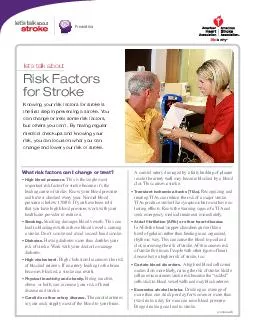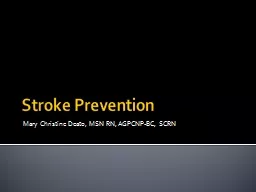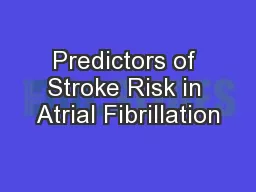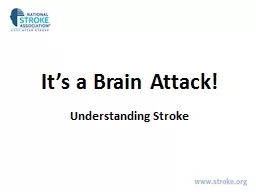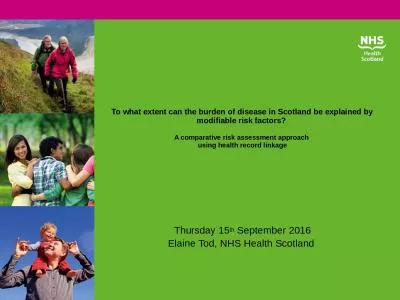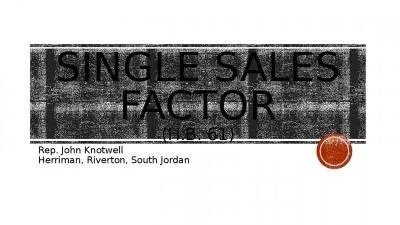PDF-continued lets talk about Risk Factors for Stroke What risk factors can I change or treat
Author : briana-ranney | Published Date : 2015-01-14
1 cause of stroke Know your blood pressure and have it checked at least once every two years If its consistently 14090 or above its high Talk to your doctor about
Presentation Embed Code
Download Presentation
Download Presentation The PPT/PDF document "continued lets talk about Risk Factors f..." is the property of its rightful owner. Permission is granted to download and print the materials on this website for personal, non-commercial use only, and to display it on your personal computer provided you do not modify the materials and that you retain all copyright notices contained in the materials. By downloading content from our website, you accept the terms of this agreement.
continued lets talk about Risk Factors for Stroke What risk factors can I change or treat: Transcript
Download Rules Of Document
"continued lets talk about Risk Factors for Stroke What risk factors can I change or treat"The content belongs to its owner. You may download and print it for personal use, without modification, and keep all copyright notices. By downloading, you agree to these terms.
Related Documents

